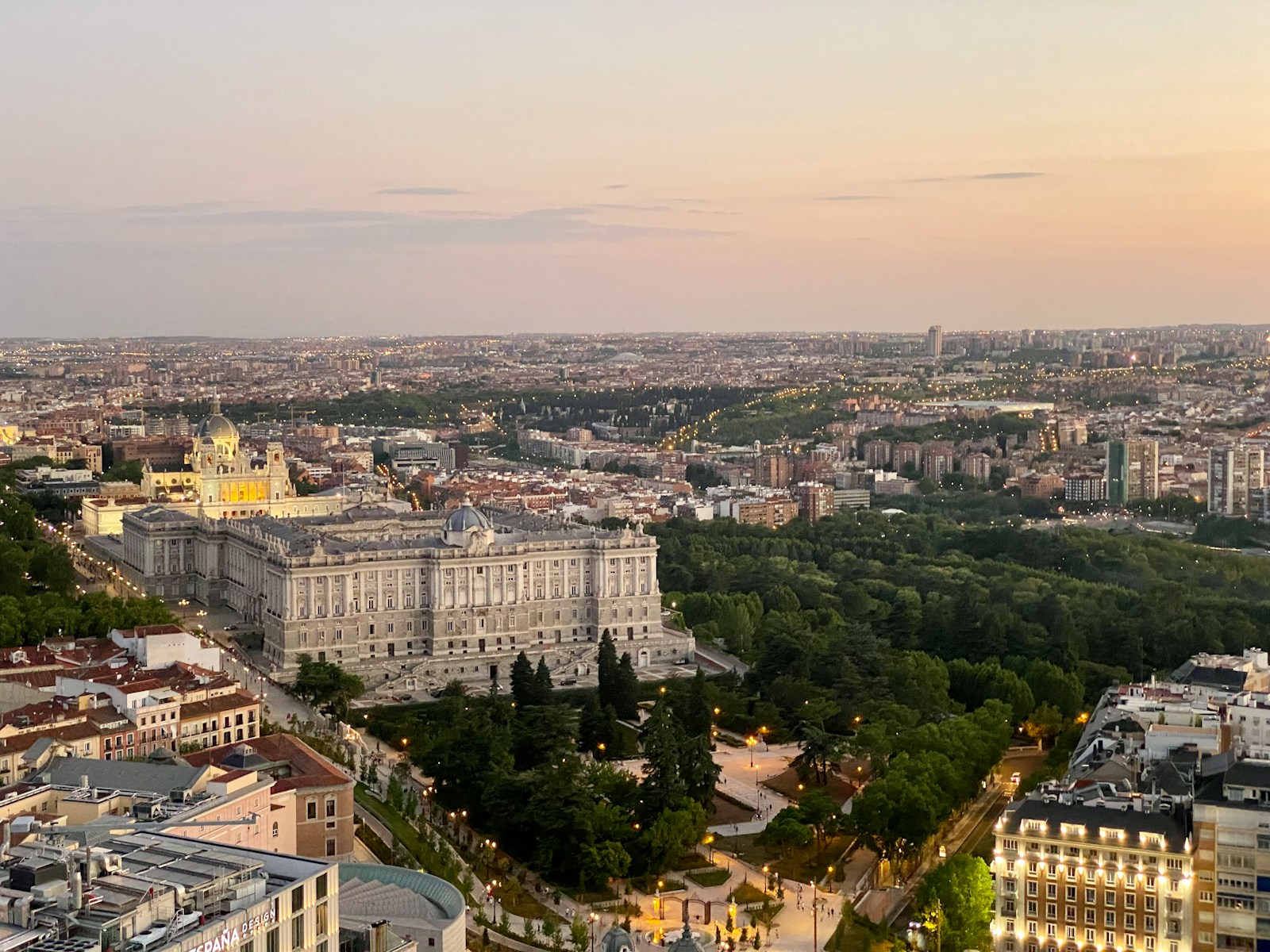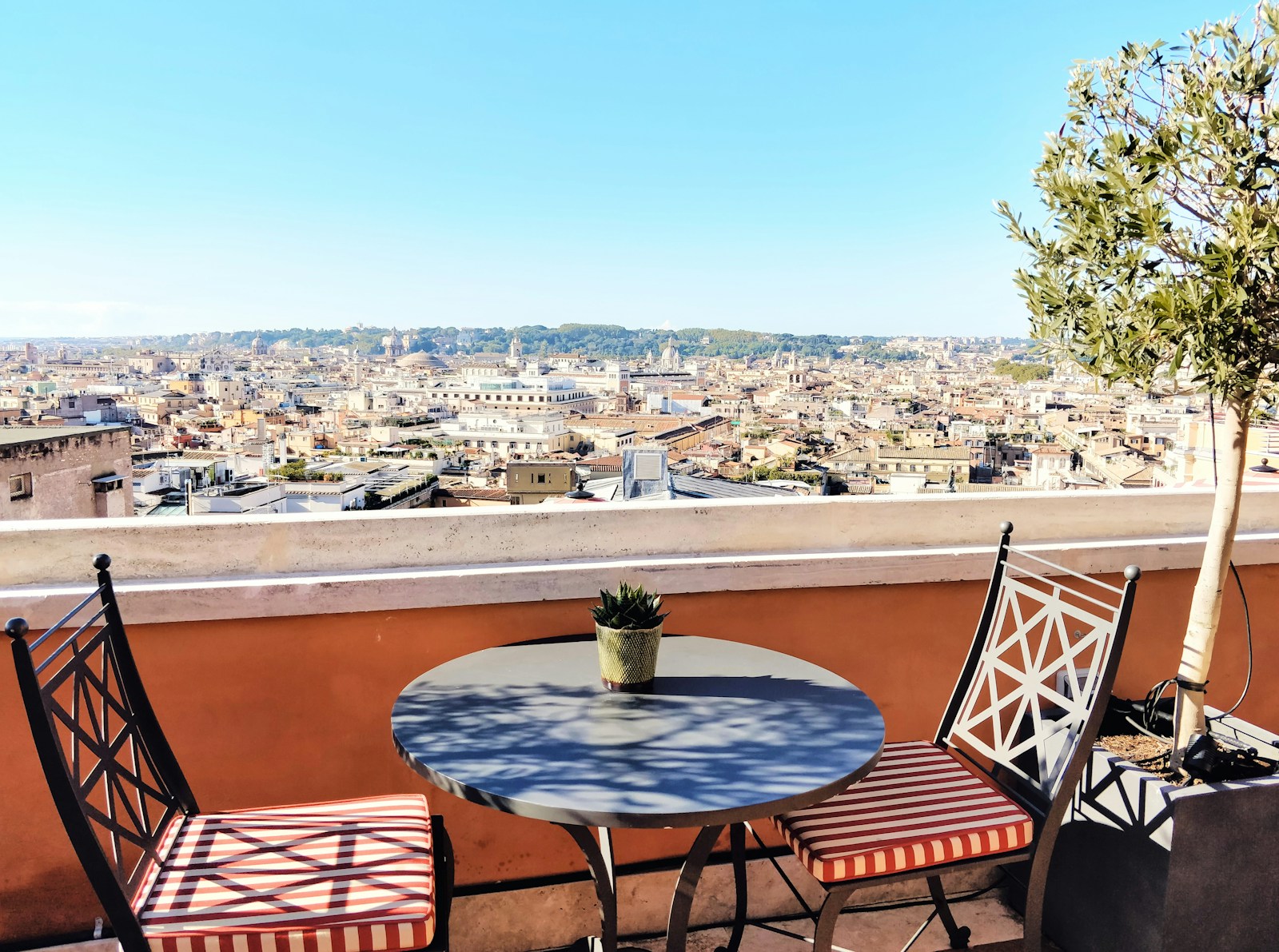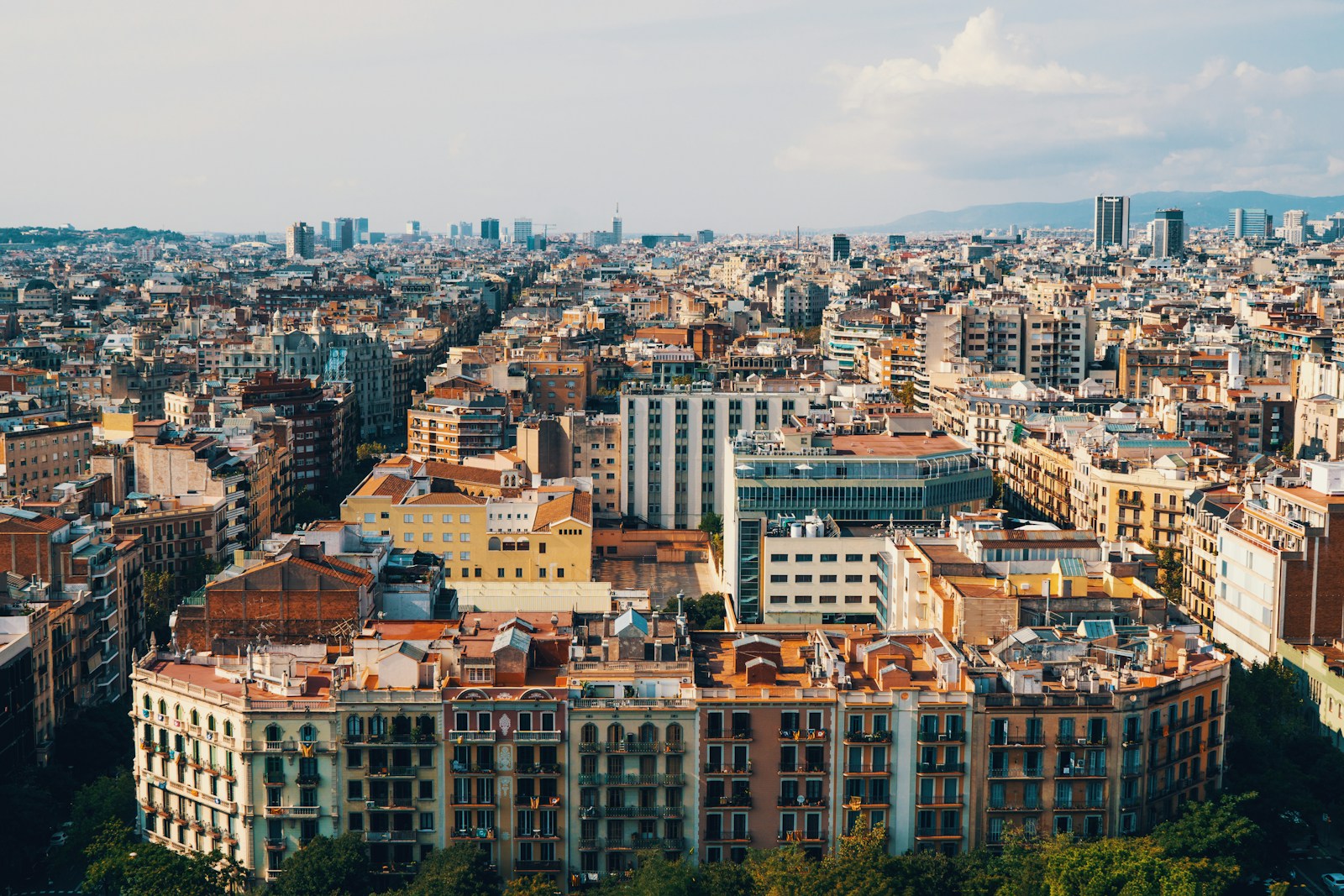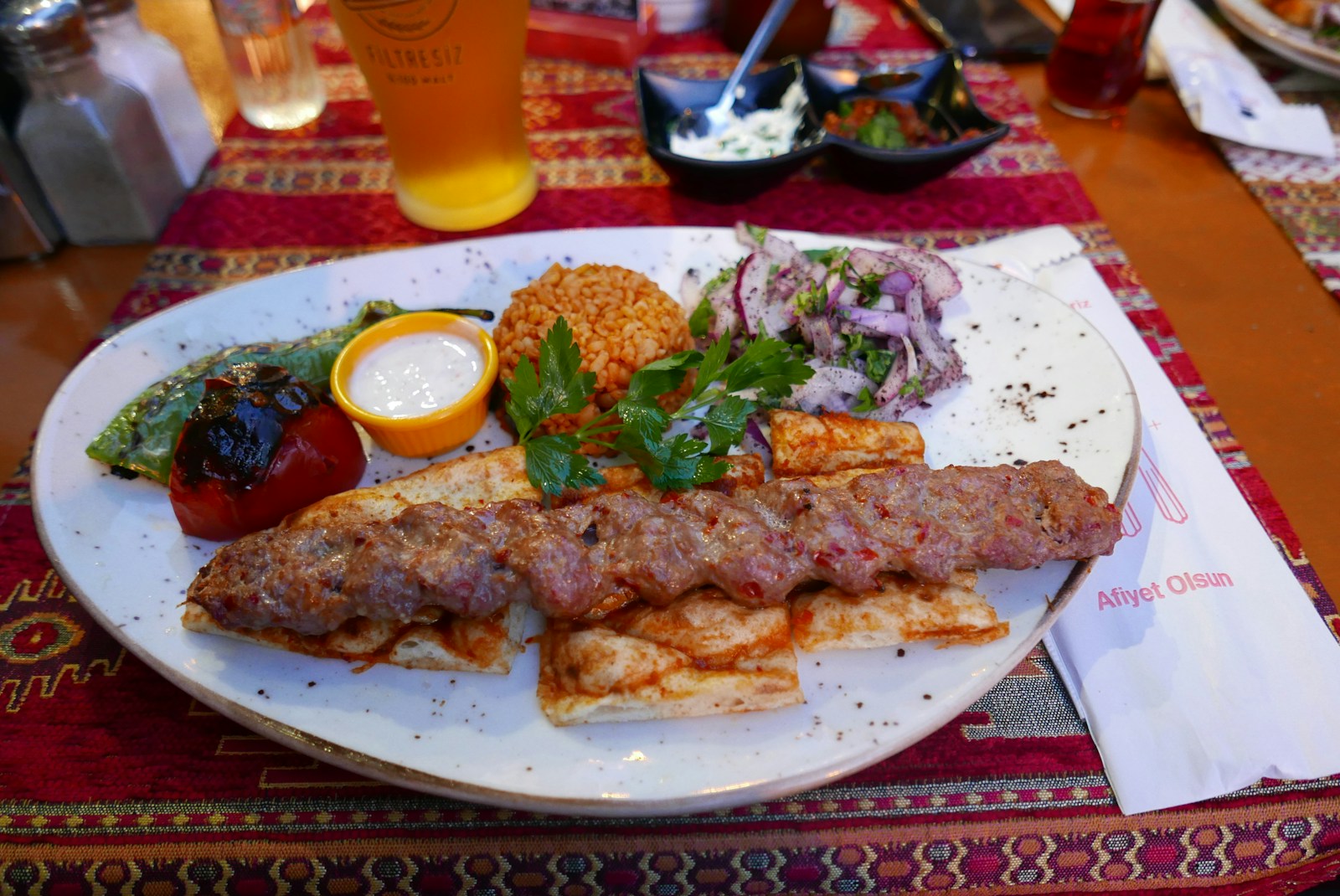The Royal Palace of Madrid is of great importance as it gives out an imposing image of history and majesty of Spanish kingdom. Stretching for 135 thousand square meters, it surpasses in size even the royal Buckingam Palace and the Versailles Palace, which are considered the largest in Western Europe and one of the largest in the whole world. The grandeur inside palace contains many more historical and artistic cultural assets and some of them are one of the kind musical instruments paladin stradivarius and other paintings. The official ceremonial palace today is used only for official receptions, ceremonies, and other similar state events; however, the State Rooms and treasure and painting collections are open to visitors giving an insight into the royal Spanish history.
The Majestic Gardens :
Sabatini Gardens
The Sabatini Gardens are a classicist style garden located directly across from the north face of the Royal Palace. These gardens are said to have been laid in the 1930s above the area that used to be royal stables and designed by an architect of the name Francesco Sabatini. Here, the gardens are filled with sculptures of the Spanish kings which are scrupulously placed here and originally, were designed to be parts of the palace cornice. The statues are placed now in the large rectangle shaped central pond of the garden with sophisticated fountains and giant trees to give the spirit of relaxation to the visitors. The garden has a beautiful arranged with marble benches under green trees it makes a beautiful place to sit and relax.
This place gets even more beautiful as the sun sets in the evening when at Sabatini Gardens. Before the sun, it sets, the grey minarets turn red and gold on the palace adding to what is arguably one of the most beautiful sunsets in Madrid. The aura of this place along with such a history of gardens ensures that it is visited by both local and international people.
Campo del Moro
As a large 20-hectare garden Campo del Moro can be viewed rather as an example of complete opposite to the neo-classical perfection of the Sabatini Gardens. Declared as a Historic Artistic Monument in 1931 this garden is a frenzied English style with a steep slope leading down to the Manzanares River. For the landscape and design of the garden the credit goes to the architect Ramón Oliva, who has converted the closed and wasted area into full of natural life.
Among the main attractions of the garden, it is possible to single out the avenue called the Praderas de las Vistas del Sol followed by the Paseo de las Damas. Crossing these two paths, there is the neoclassical Fountain of the Shells, which is an explosion of history and art. Another onsite masterpiece is the Fountain of the Tritons made in similar style. Visitors can also explore two unique structures: The Chalé del Corcho was made of cork and the Chalecito de la Reina in a beautiful Tyrolean architecture. Being an area with garden, the area is opened from 10:00 AM to 6:00 PM daily, who also provides catering services.
The element of architecture: The Royal Palace
Main Façade
The Royal Palace, or the Palacio de Oriente, was built on the spot of the Real Alcázar of Madrid, which used to be the kings’ residence; however, it was burned to the ground in 1734. The present palace, done several times, is Baroque; it is sometimes rightly boasted to have been an architectural and artistic creation of the time period.
The structure of the palace comprises large Doric pillars and doors with magnificent windows that provide a view of amazing balconies. Spanish kings’ statues are also placed on the façade which was done after the restoration that was carried out in 1973. These sculptures made with materials such as marbles and bronze accompanied by the tower clock of the Palacio de Oriente make the palace to have a royal look. On one side, towards to the Plaza de Oriente, there is located the main façade with royal statues like Philips V with Maria Luisa Gabriela of Savoy, Fernando VI with Barbara of Braganza.
The palaces, the gates, and squares within its area
Armory Square
Armory Square as open area does play a prominent role connecting the Royal Palace to the Cathedral of Santa María la Real de la Almudena. Built in 1533 by Philip II for ordering royal horses this square has gradually developed into one of the significant venues for all royal events. Musical shows include the Changing of the Guard and the Solemn Relief of the Royal Palace that can be watched every Wednesday and Saturday from 11-00 AM to 2-00 PM every 30 minutes. This cultural practice also contributes to increasing the amount of activities associated with history admiring, thus contributing to the formation of a stable flow of tourists.
Plaza de Oriente
Plaza de Oriente built by Narciso Pascual y Colomer in 1844 is a well planned square having an oblong shape. The eastern part of the square is semi circular and in this area is found the Teatro Real which is well known opera house. This round walking arcade houses statues of twenty gothic and visigothic monarchs of Spain; the statues are located to the sides of the central garden. These statues that depict the Gothic kings and rulers of Span from the period of the reconquest make the place historical and interesting to visit.
Interior of the Palace and its Sheen :
The Royal Library
The Royal Library situated inside the palace is exclusively rich with knowledge and the history of the country. The two-story library has the main level that sports mahogany bookshelves sourced from 1840. The collection consists of one third of a million volumes, five thousand manuscripts, three thousand music scores, seven thousand maps and such exceptional items as atlases and detached map sheets. Also, there are 15,000 engravings and drawings deposited into the library of the academy. This vast library gives a detailed view of Spain’s literary and cultural past.
Royal Armory
This armory is considered to be one of the best in the world and is compared even with imperial armoury in Vienna. This collection has been depleted of some pieces during the Peninsular War as well as the Spanish Civil War; however, the remaining collection impresses even now. It comprises some of the tournament armor that Milan’s master armorers made for Charles V and Philip II. Visiting the room and seeing various items and techniques used, one can truly appreciate the artistry and the military culture of the Spaniards during the given time period and with the royal engagement in armory by then, many spectacular and unique pieces of armor and weaponry pieces were developed and seen in the armory.
General Archive
The General Archive situated near the Armería side of the plaza, where the three arches are also present, houses documents concerning the Royal Household Archive and the National Archive of Spain. It was founded in 1814 and its primary responsibilities are to manage and categorize records how are created by the government’s offices, and the Royal Household administration. This archival collection is especially useful to the researcher and a historian since it sheds light on the Spanish monarchy’s administrative and day-to-day functioning.
In stage one, there is the Grand Staircase and Upper Floor Rooms.
Main Staircase
The principal staircase in the Royal Palace is indeed a delicacy to watch with artistic features that include; the door hinges, the glass chandeliers, and the elegant ceiling paintings. The paintings done by Corrado Guiaquindo on the vault provide triumphs of religion and the church; victory of Spain over domination by Saracens and Hercules uprooting the Columns of Gibraltar against the power of Neptune. On the central part of the staircase there is the statue of Charles IV in Roman dress as a symbol of monarchy authority. The stairs are a vestibule to the upper stories of the palace and thus prepares the beholder for the inside luxury.
Hall of Halberdiers
Designed as a ballroom or a formal dining room, the room was changed by Charles III to become the guardroom for the palace halberdiers. Pictorial art is represented in the frescoes; the main fresco was designed by Giambattista Tiepolo that portrays mythological themes on the ceiling of the room. The interior of the hall directly copies the Palace and, therefore, gives the visitor a feeling of the ceremonial life of the Spanish court.
Hall of Columns
The Gallery of Columns is a rather unusual room with smooth pillars and fluted columns interconnected with them. The king’s vault is adorned with a fresco with the stems Birth of the Sun and the Triumph of Bacchus and was completed by Giaquinto. Here, the following works are placed: four big ceiling lamps, sculptures of the XVI century, tapestries of the XVII century, Flemish. This was the assembly hall for balls and banquets; now, it is the concert hall for the Stradivarius Palatinos; there is a cultural aspect in the palace.
Porcelain Cabinet
The Porcelain Cabinet is one of the famous rooms of the palace and it possess the certain classicist late Baroque style. The Porcelain division includes framed squares on the walls of the room, the design by Gasparini. In many of them, there is parquet of inlaid colored marble on the walls and striking examples of artisan masters. This room is an interlocking design that is elaborated with fine decoration and would be considered among the showpiece of the palace that defines the ostentatious and extravagant lifestyle of the Spanish monarchs.
Gasparini’s Chamber
Chamber of Gasparini from the decorations in Charles III was a dressing room for the king. The presence of Rococo of the room is evident in furniture used, the marble floor and the wall finish in the room so as to fit to ensure a good and attractive room. The chamber is the most beautiful chamber of the palace due to its design and historical background that sheds light on the routine activities of the Spanish kings.
Gala Dining Room
The Gala Dining Room is rather a vast hall intended for the holding of the banquets and receptions. In the specific room, there is a table painted in neo-baroque style with the length of 40 meters and Bagnères marble columns. The following fixtures are used in the room; There is illumination by fifteen chandeliers together with ten wall lights that have bronze decorations. This dining room also has two large Chinese porcelain jars, belonging to the 18 th century and six large bronze and Sèvres porcelain vases. That luxurious context contributes to the purpose of the palace as the place for the grand celebrations and important state events.
Hall of Mirrors
The complicated layout of the palace that features the gorgeous Hall of Mirrors where queen Maria Luisa of Parma had her boudoir is neoclassical. It also has rather large mirrors, gilded, with stuccoed white with blue background and plant ornaments. In the era of Alfonso XII, the room was converted into a music room, additionally the room Pylos was expanded. The Hall of Mirrors that adorned with the sophisticated Queen of Spain and convey the historical Spaniards’ thirst for cultural enlightenment is the perfect setting.
Throne Room
Throne room is one of the most crucial rooms of the palace, and the appearance of which did not change much. It still discharges this function and is the place where the kings entertain offiicial visitors. Ceiling of the room vault was done by Roberto Michel and fresco work by Giambattista Tiepolo showing the majesty and might of the Spanish Monarchy. This room exudes Rococo style and is furnished with bright red trimmed velvet that looks golden due to the incorporation of silver threads thereby achieving a royal look. The images of Apollo and Minerva as protectors of the throne, are indicative of an endorsement from God to rule from the monarchy point of view.
Crown Room
It is home for royal crown and sceptre and a throne, all made in reign of Charles III. It also has the chenille of the order of the golden fleece, which the Spanish Royal Family awards to its dignitaries. Among the exhibits of the room, there is the genuine armchair from the Throne Room; Sphinx Table in Imperialist style, which belonged to Charles IV. These items are reflective of the monarchy and hence the Crown Room is one of the most important royal artefacts preserved.
Chapel Royal and Its Coffer
It can be said that the Royal Chapel is one of the most religious and certainly one of the most artistic areas of the palace. It has many excellent items in goldsmith work, a dome; the columns of black marble; and baroque paintings by Corrado Giaquinto. The architecture of the chapel also has a classical concept where there is a high altar, gospel side altar, the king and queen chairs, and an eighteenth-century organ. From the architectural and ornamental point of view, the chapel is the qualities of a worship place and a reflection typical of the Spanish monarchy.
Practical Information for Visitors :
Location and Access
This place is in Madrid and the main entrance of the Royal Palace can be from the Bailen Street and Armory Square. This central position entails that it is well accessible by public transport means such as buses and metro services. The visitors can also drive to the palace from different parts of the city although it is possible to walk to the place from different areas due to the availability of access points through the attractions such as the Plaza de Oriente, and the Sabatini Gardens.
Opening Hours
Thus, the palace works all year round with slightly different schedules depending on the season. During October to March, it is opened daily at 10 in the morning until 6 in the evening and the ticket selling is until five in the evening. During April to September, the palace has early openings till the hours of 10:00 P.M., the gate closing at 7:00 P.M. Randomly, the palace is closed during New Year’s day, Epiphany, All Saints’ Day, and the Christmas season. These schedules give the visitors enough time to tour the palace attractions and the various exhibitions in the site.
Admission Fees
The Royal Palace has a variety of tickets depending on the needs of the visitors they hold and apart from what was listed, there are others like the sculpture park tickets and other multi-attraction tickets. The entry included with exhibition visits costs € 11 until March 31 or € 13 from April 1 to September 1, while € 12 after September 1. There is a possibility for passengers to get discounts depending on the one’s status, age, or size of family; the price for the tickets, depending on season can range from €6 for students, to €7 for seniors, to €6 for families. The children below the age of five years, families with many children, teachers, the disabled, and jobless people are allowed free entry.
Extra facilities consist of an individual walking tour for 4 Euro, an audioguide for 3 Euro and an SKP application for Android as well as iPone for 1 Euro. 99 and €2. 29, respectively.
Conclusion
Due to its vast collections of history, art and architects one can consider the Royal Palace of Madrid as a unique tour of the Spanish royal estates. The gardens, the outside looks of the palace and the elaborated interior are the actual evidence of the beauty and cultural level of the Spanish monarchy. If you choose to wander in the Royal Library that contains hundreds of books or observe the stucco work in the Porcelain Cabinet or feel a royal breath of the Throne room – everything is unforgettable.
It’s not just a historical trip but a tourist is also privileged to peek into the aesthetic and cultural development that is Spain. Everything can be easily reached and the services available for the visitors make a visit in the palace very comfortable and informative.
Royal Palace of Madrid is a historical landmark of Spain and tours are provided to unveil the mystery behind and witness the beauty of it.




